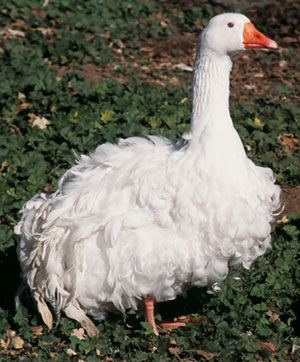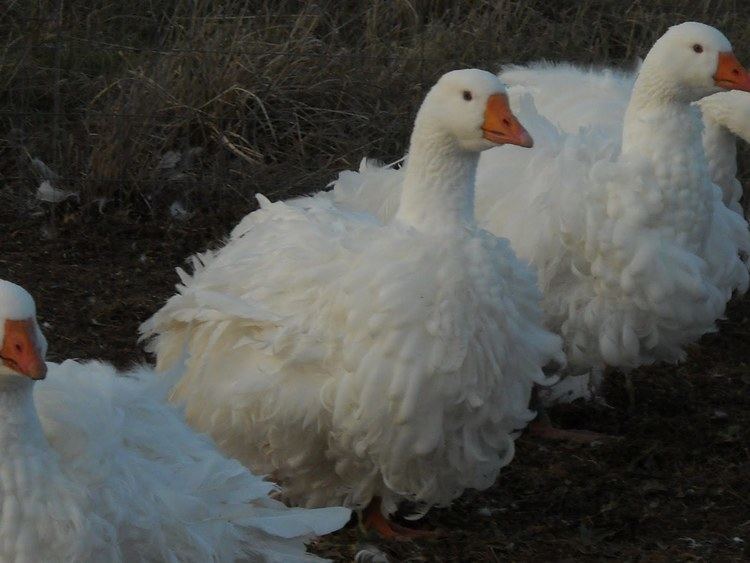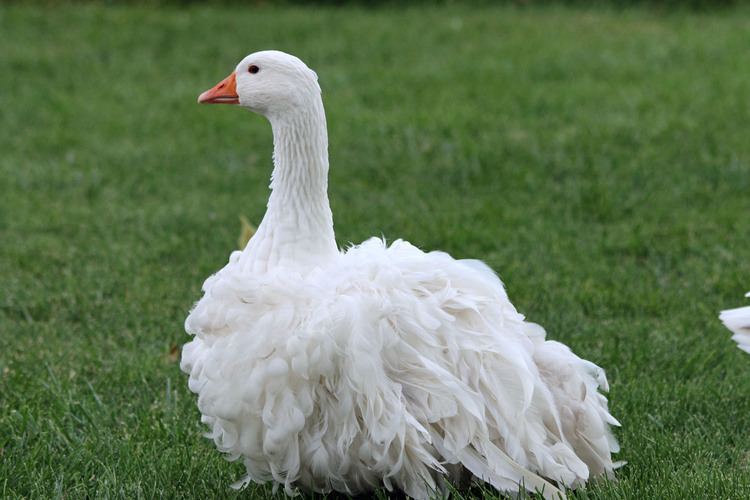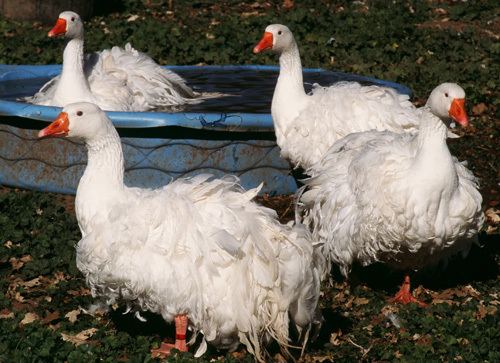 | ||
Similar Pilgrim goose, Emden goose, American Buff Goose, Toulouse goose, Chinese goose | ||
Unique pet sebastopol goose oliver follows directions toys in towel nest
The Sebastopol is a breed of domestic goose, descended from the European graylag. First exhibited in England in 1860 under the name 'Sebastopol goose'; they were also referred to as Danubian geese; a name first used for the breed in Ireland in 1863. 'Danubian' was used as a synonym in the 19th century; and only given precedence by Edward Brown after the turn of the 19th century. The Sebastopol is a medium-sized goose with long, white curly feathers. The feathers of the neck are smooth and sometimes greyish brown. Crosses have produced all-gray, buff, and saddle back variants. Feathers on the breast may be curly (frizzle) or smooth. The gander weighs 12-14 lbs while the goose weighs 10-12 lbs. The legs and shanks are orange and the eyes bright blue. On average, females produce 25-35 eggs per year. Though domesticated breeds of geese generally retain some flight ability, Sebastopols cannot fly well due to the curliness of their feathers and have difficulty getting off the ground. They need plenty of water to keep themselves clean, and to clean their sinuses (as do all waterfowl).
Contents
- Unique pet sebastopol goose oliver follows directions toys in towel nest
- Pet goose oliver diapered sebastopol goose riding shotgun in passenger seat of car
- History
- Breeding
- References
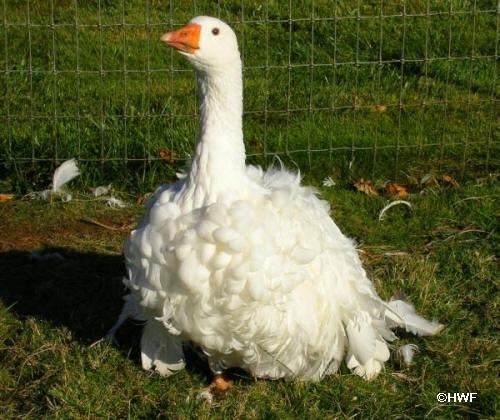
In German, they are called Lockengans or Struppgans, meaning "curl-goose" and "unkempt goose".
Pet goose oliver diapered sebastopol goose riding shotgun in passenger seat of car
History
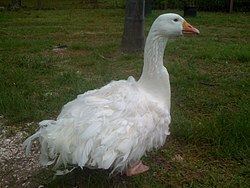
It has been stated the breed was developed in Central Europe along the Danube and the Black Sea. However, it is documented that the birds were originally met with in the Crimea and sent from the port of Sevastopol, as the name implies, and arrived in England in 1860. By the 19th century they were found in all the countries surrounding the Black Sea. The alternate name Danubian reflected their prevalence around the river Danube. They were originally bred to use their curly feathers in pillows and quilts.
Breeding
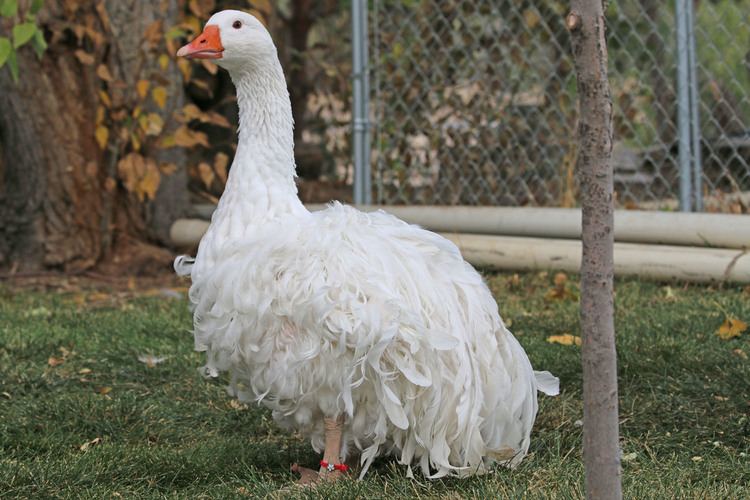
Breeding over the last hundred years has increased the average weight of the birds by thirty percent. This occurred in America due to matings with Embden Geese made in the late 19th century.
